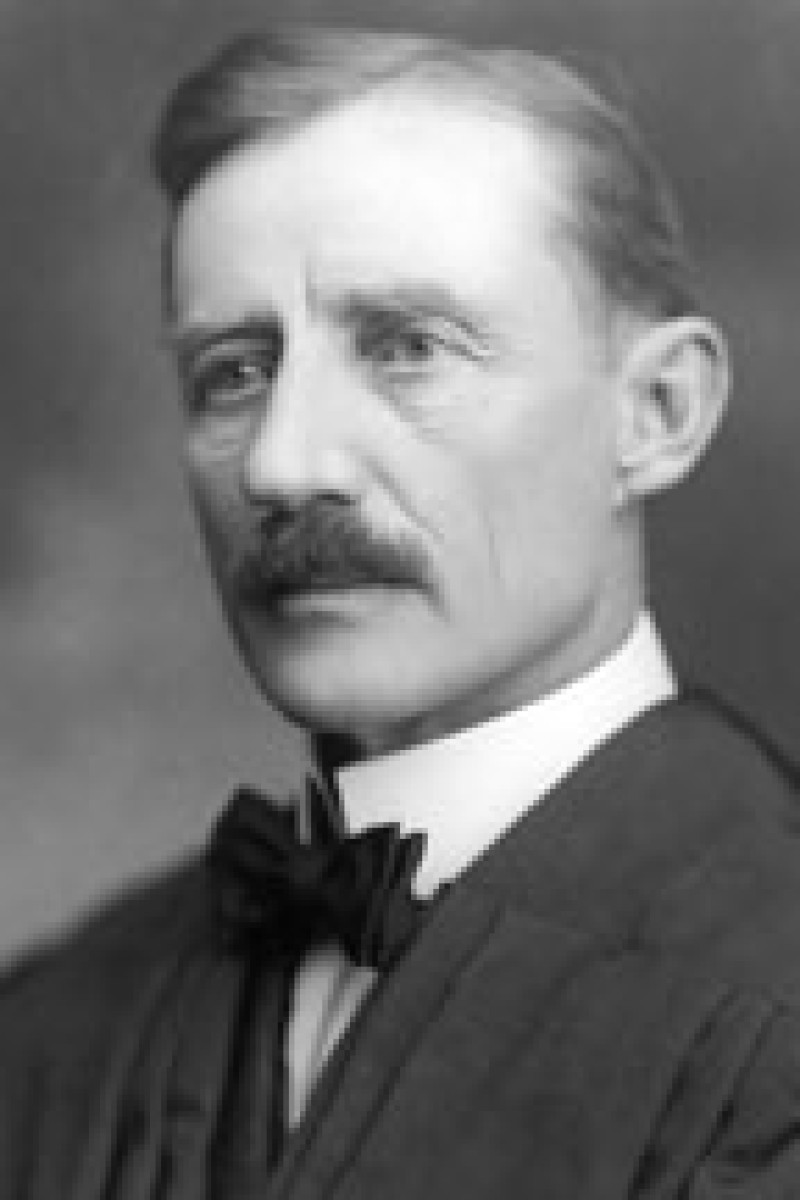Thomas Alfred Jones
Thomas Alfred Jones’ legal career covered 54 years and included 37 years of service on Ohio appellate court benches. Such service stood out in 1937 as representing the longest appellate court tenure by an Ohioan. Justice Jones believed the Supreme Court of Ohio’s upholding of laws to provide poor relief was its most important decision during his tenure. The Jackson Journal quoted Jones, “I held that the state had that right under the exercise of its police powers. The welfare of the people is the paramount law.”
Jones, the son of Eben and Ann Williams Jones, was born on March 4, 1859 in Jefferson Furnace, Ohio. He was educated in rural Jackson County schools and became one of the first four graduates of Jackson’s public high school in 1876. After graduation, he enrolled at Ohio University, earned a bachelor’s degree in 1881 and selected as a member of the university’s Phi Beta Kappa academic honorary society. After leaving the university, Jones followed his father’s example and returned to Jackson County, where he taught in the rural Shumate country school. During this time, he also read law in the offices of Jackson attorney James M. Tripp. In 1883, Jones passed the Ohio bar exam, was admitted to the bar and joined his mentor in private practice.
Three years later, Jackson voters elected Jones mayor to succeed Charles C. James, despite the fact that Jones had not held public office and lacked political experience. When he took office in April 1886, at age 26, he was the youngest person to hold the office of mayor of Jackson. He served one two-year term before returning to private practice and did not seek public office again until 1900, when voters elected Jones to Fourth Circuit Court of Appeals of Ohio. He campaigned successfully for re-election in 1906. In 1912, Jones campaigned successfully for a seat on the newly created court of appeals that replaced the circuit courts.
Ohio voters in November 1914 elected Jones to the Supreme Court of Ohio. Voters returned him to the high court bench in 1920, 1926 and 1932. During World War I, Jones served as a member of the central Ohio committee in charge of the enlistment of British and Canadian citizens who were living in the area. Gov. James M. Cox appointed Jones to the commission established by the governor to inspect Camp Sheridan in Alabama and Camp Sherman in Chillicothe where Ohio troops were stationed.
During his tenure on the Supreme Court, Jones authored 329 majority, concurring or dissenting opinions that appear in volumes 91-132 of Ohio State Reports. His opinions addressed issues concerning malicious prosecution, rights of injured employees to workers’ compensation, a juror’s ability to impeach his own verdict and the ability of a non-charter city council to amend or repeal a voter-initiated ordinance.
Jones wrote two majority opinions for the Supreme Court in workers’ compensation cases that affirmed the ability of injured workers to receive compensation from companies that either failed to contribute to the fund, contrary to law, or that no longer could contribute due to their bankruptcy (State ex rel. Williams v. Industrial Commission of Ohio (1927) and State ex rel. Rudd v. Industrial Commission of Ohio (1927)). Jones argued for the Court that the workers’ compensation system was lawful and did not represent a seizure of private property without compensation by the government. He wrote further that the workers’ compensation system represented lawful government action under its police powers to protect the health and welfare of citizens. Jones affirmed decisions by lower courts to award injury damages to Williams and full payment of death benefits to Rudd’s widow.
Jones suffered from poor health during the 1937 term of the Court, which caused him to miss Court sessions and draft a smaller number of opinions. He died at his Woodland Avenue home in Columbus on Aug. 31, 1937. A brief funeral service was held in his home on Sept. 2. Funeral services also were held later that day at the Jackson First Presbyterian Church and burial was at the Fairmount Cemetery in Jackson.
Jones married Grace Hoyt of Athens on June 30, 1886 and the couple raised four children. Although Jones held a seat on the state’s high court continuously since 1914, he maintained his connections to Jackson County by keeping a home outside of Jackson and returning regularly to vote. Jones was a member of the Presbyterian Church, Masonic lodges in Columbus and Jackson and the Knights Templar.

b. March 4, 1859
d. Aug. 31, 1937
81st Justice of the Supreme Court of Ohio
TERM
Jan 1, 1915
to Aug 31, 1937
